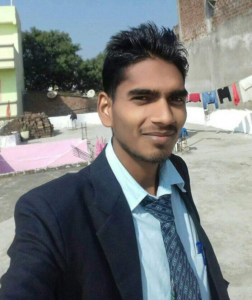Drawing a line in sand
A year after Dilip Mahato was killed by the sand mafia, his family still seeks justice, and illegal mining continues unabated
Bhrikuti Rai in Dhanusa
Each time Sangam Mahato passes the excavators scooping up sand from the Aurahi River, it brings back painful memories of her brother, Om Prakash. Also known as ‘Dilip’, her brother had been protesting illegal sand mining, and pushing for the conservation of the ecologically fragile Chure Hills.
Dilip was murdered on 10 January 2020, crushed beneath the wheels of a tipper truck. He was only 24.
“My brother had been in arguments with contractors who he believed were destroying the Chure and the rivers nearby with uncontrolled excavation,” recalls Sangam. “But we never thought that his activism would cost him his life.”

Dilip’s murder made headlines. His body had cuts from a sharp iron rod, and deep injuries from being run over. Social media was filled with ‘Justice for Dilip’ posts. Everyone, from former president Ram Baran Yadav to Members of Parliament, condemned Dilip’s murder and vowed to protect the Chure.
After the crime, on 13 January the Province 2 government said it would put an end to all illegal riverbed mining and handed half a million rupees to the Mahato family for their loss. But a year on, the spotlight has moved on to other injustices. The local and national governments are struggling to control the Covid-19 pandemic, Nepal is in a full-fledged political crisis, and the rampant destruction of the Chure has resumed.
Dilip was an engineering student at college in India and had come home for his holidays. Seeing his community suffer from the consequences of uncontrolled riverbed mining, he had become an environmental activist.
Deforestation and mining were drying up water sources, the ground water table was receding, and in the monsoon the flooded rivers destroyed homesteads and farms. Forest cover in the Chure, which makes up 15% of Nepal’s area, is vital for groundwater recharge in the Tarai. The sand and boulders in the floodplains slow the velocity of rivers in the monsoon.
But not even Dilip’s death and the ensuing public outrage has stopped contractors from mining the river beds and hills for sand, aggregates and boulders to feed a booming construction industry.
“Earlier, we only had to dig about 20 metres to install a hand pump, but now we have to look for water as deep as 100 metres, and even that does not guarantee water supply for more than a year or two,” says Dhanusa activist Dev Narayan Mandal. “The water scarcity here in the dry season is as bad as in a city like Kathmandu.”
It is in Province 2 that the consequences of the unsustainable exploitation of natural resources are most acute, and are further burdening an already impoverished region. The province ranks among the lowest on the Human Development Index.
In a 2018 report by the National Planning Commission, Province 2 fared the worst nationally. It said: ‘roughly half of the population is poor … the intensity of deprivation is higher in Province 2 than it is nationally’.
Rampant riverbed mining for sand and boulders have also made the rivers downstream increasingly destructive, breaching their banks and destroying farmlands and villages. While water is in short supply during the dry season, floods and landslides are becoming common in the summer and the monsoon.
According to the Home Ministry, nearly 200 people have lost their lives to floods just in the eight districts of Province 2 in the last decade and thousands of families have lost their homes and property to inundation.
Nor any drop to drink
Digambarpur in Chhireshwarnath municipality is a quiet village on the banks of the Jallad River in Dhanusa. The settlement’s 900-odd households are spread out next to sprawling green fields where farmers grow sugarcane, mustard and an assortment of vegetables, from cauliflower to eggplant. The produce is consumed locally, and also sold to the nearby towns of Janakpur and Bardibas.

But with each passing year, growing crops in Digambarpur’s fertile soil has become more difficult, and expensive. Despite being situated less than 500m away from the Jallad River, which has its source to the north in the Chure, the once-abundant water sources have dried up. For water-intensive crops like sugarcane, not having reliable irrigation means that much of the cash crop dries up before it can be harvested.
Now, black plastic pipes connected to water pumps jostle for space at the openings of deep wells beside each home, a stark reminder of the water shortage in the plains.

As the oldest of siblings, Om Prakash, or Dilip as he was known, was the ideal son — socially responsible, active in the community, and with hopes of supporting his family as an engineer. But on January 10, 2020, he was found dead on the banks of the Aurahi river, the same water body that he had worked so hard to defend from illegal sand miners. He had been brutally beaten and crushed under the wheels of a tipper truck.
His family alleges that his body was run over by a truck to make it look like an accident. It is largely believed in the community that Dilip was murdered by sand miners with whom he had butted heads countless times in the past over their extraction of sand from the riverbed of the Aurahi. The case is currently sub judice at the Dhanusha District Court.
“My brother lost his life fighting against environmental exploitation. We hope this will not repeat again,” said Sangam Mahato, Dilip’s younger sister.
https://nepalitimes.com/drawing-a-line-in-the-sand/index.php
